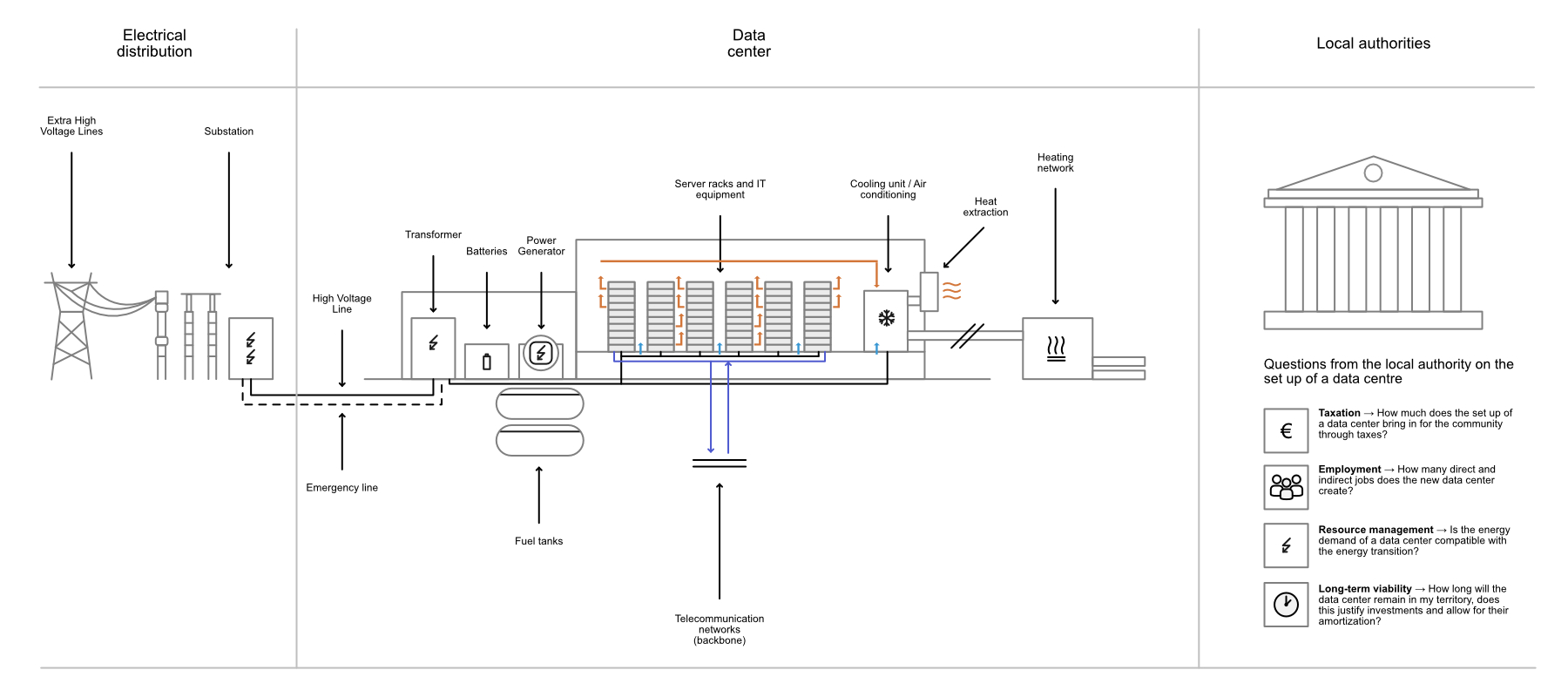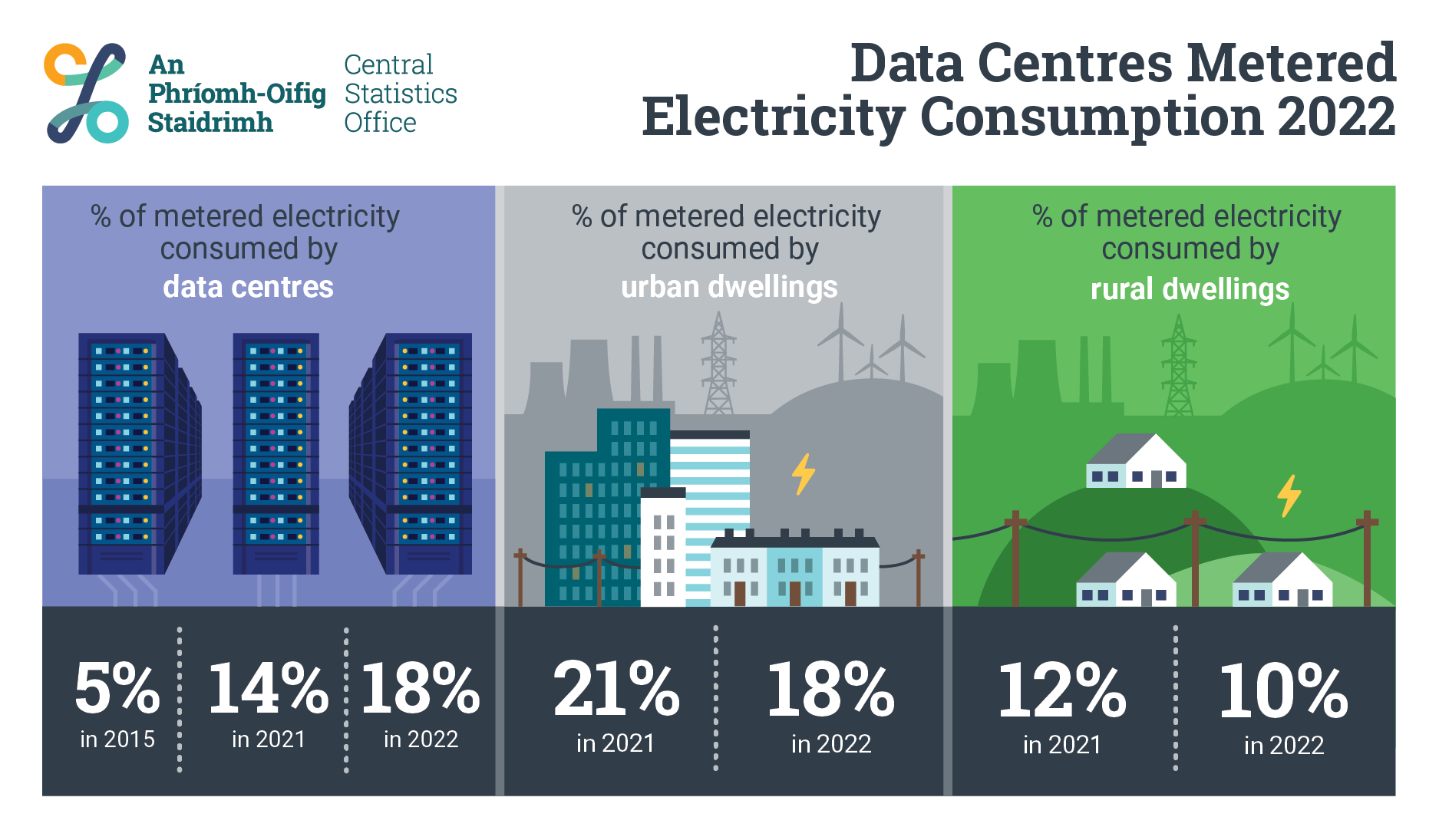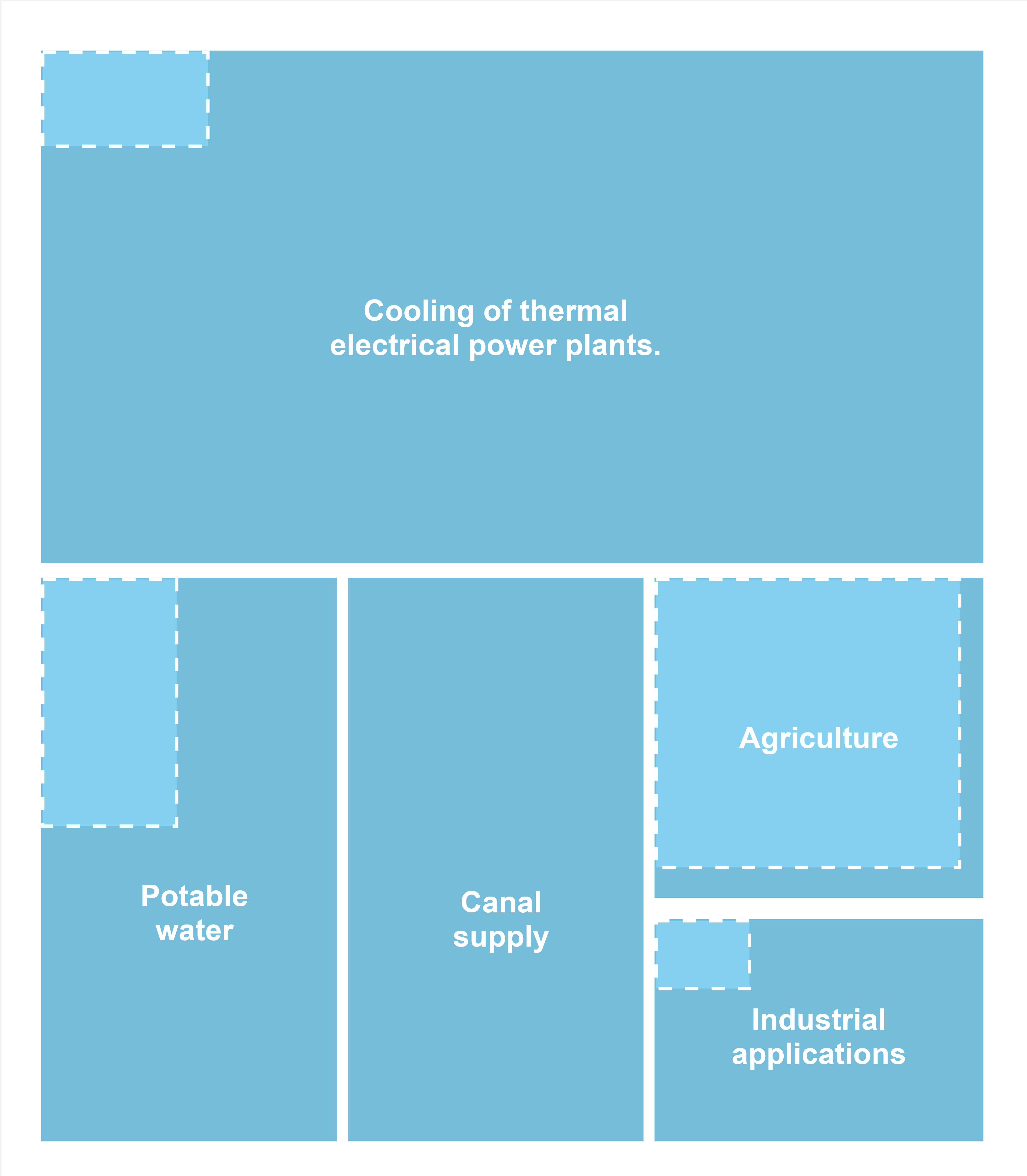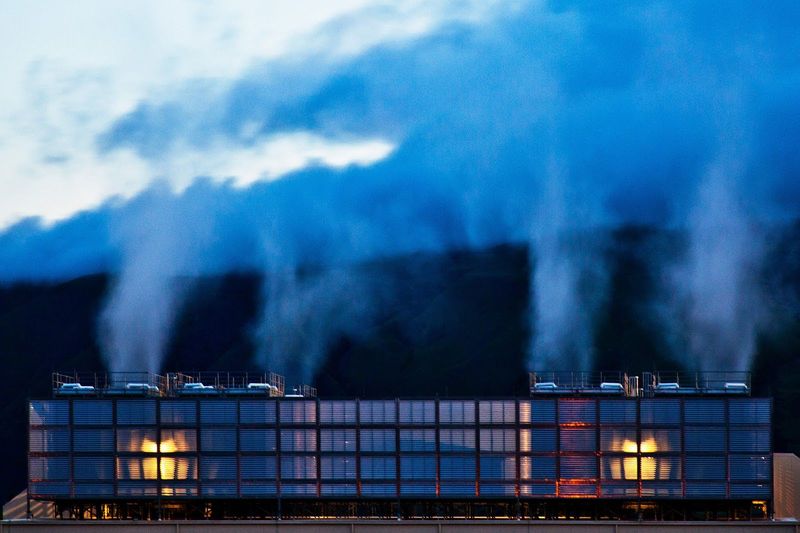Session 3 - Understanding the materiality of datacenters
Deploying data centers
Data centers are like any industrial complex and need to meet several conditions to be deployed and used. For instance, the location choice of a data center is influenced by the following characteristics:
- privileged access to the electricity grid (source station)
- privileged access to internet fibre network (backbone)
- low natural risks (eruptions, floods, etc.)
- access to cheap land
- low cost or preferential electricity rate
- tax benefits or tax reductions
- potentially access to a water network
Beyond servers and network equipment, it means that inside a data center you will find power lines, going to a transformer and also to batteries, along with fuel tanks and power generator to take over in case of power failure. The transformer will send power to IT equipment (servers, etc), to the cooling unit and to the rest of the facility. Like any industry, data center operators need to negotiate with local authorities to establish itself in the local area and its infrastructures.
 What does a data center need and what is inside? – See high-res here
What does a data center need and what is inside? – See high-res here
Submitting a data centre project to a local authority is generally a lengthy exercise, and one that tends to remain discreet in order to avoid the interests of competitors and local opposition. Here you can browse Amazon Web Services' data centre project in the town of Gilroy here. Data center projects are typically designed in phases, increasing capacity and demand of the infrastructure with each step of the phasing. In that case, Amazon is securing land (438,500 square feet) and is giving a list of the infrastructure and equipment need for the project : backup generation, battery systems, their own substation, a water pipeline, security fencing and protection from storms.
A data centre is never just about servers; this type of industry involves a whole range of local and national players and relies heavily on access to existing infrastructure. However, the scale of the tech giants' new data centre projects means that they now have to create their own infrastructure for both energy and water supplies. This does not mean, however, that this eases the burden they place on an area.
Activity: France's attractiveness for data centres
Do you think that France is an attractive place for datacenter implementations?
| Criteria |
|---|
| Privileged access to the electricity grid (source station) |
| Privileged access to internet fibre network (backbone) |
| Low natural risks (eruptions, floods, etc.) |
| Access to cheap land |
| Low cost or preferential electricity rate |
| Tax benefits or tax reductions |
| Potentially access to a water network |
| Other criteria |
Power availability in Ireland
Like any industry, if data centers are too concentrated in the same area the power available on the grid becomes more scarce. For instance, Ireland has attracted many tech companies to set up in their territory, notably thanks to large financial advantages. The Irish Central Statistics Office estimated that data centers accounted for 11% of national electricity consumption in 2020 and 14% in 2021. The national electricity supplier estimates that at this rate data centers will represent 33% of Ireland's electricity consumption by 2030. This growth is of course unsustainable for the energy provider Eirgrid and the latter has notably warned that it will no longer supply electrical power to new data center projects in Dublin until 2028. The place and importance of data centers is giving rise to important societal debates in Ireland and presages a larger problem of accounting between economic development, infrastructure management and climate policy.
 Data Centres Metered Electricity Consumption 2022 - Credits: Irish Central Statistics Office
Data Centres Metered Electricity Consumption 2022 - Credits: Irish Central Statistics Office
This energy demand is also difficult to reconcile with the climate commitments which imply a reduction in energy consumption in absolute terms by 2050. For example, France must reduce its final energy consumption from 1600 TWh in 2020 to 900 TWh by 2050. However, the French energy network operator (RTE) estimates that electricity consumption by French data centres will increase threefold between 2020 and 2050. This raises the question of whether it is relevant to invest in data centres compared to other electricity-intensive infrastructures (vehicle electrification, reindustrialisation, heat pumps, etc.) in a context of limited electricity production.
This is the case in Marseille, where Mayor Jean-Claude Gaudin had to negotiate with Interxion to recover 7 MW ‘because they had forgotten to reserve it for their electric buses’. Cécile Diguet and Fanny Lopez (2019)
Water stress / consumption in the United States
Certain definitions must be established when discussing environmental issues related to water. Used water is not lost from the biosphere. Rather, it can be transferred from one watershed — a geographical area where water flows to a specific point — to another, typically through evaporation. It is important to distinguish between used water — the total amount of water used in a process — and withdrawn water — the total amount of water withdrawn from a watershed.

Withdrawn water (light blue) vs used water (blue) per sector in France, from Le Monde (2023)
Larger (hyperscaler) data centers typically use evaporative water cooling, especially in the western part of the United States. However, these areas experience varying degrees of water stress. Some of these data centers may require a significant amount of water in relation to territorial capacities and may potentially create conflicts of use. There are other ways of cooling with water, including freecooling and adiabatic cooling which uses much less water. See the different cooling strategy of Azure depending on the climate here. Adiabatic cooling is used at Scaleway's DC5 data centre in northern Paris.

Example of evaporative cooling in a Google's data center (Credits: Google)
Beyond the cooling techniques (direct water footprint), the origin of the electricity is a major problem. Indeed, water is needed to produce electricity in power plants equipped with steam turbines or hydroelectric dams. On average the water intensity for electricity generation for 2015 in U.S.A. was 2.18 liters per kilowatt hour (Mytton 2021). In this sense, water stress can affect the production of electricity but also data centers that use water cooling.
In addition to the volume of water withdrawn, the location of the withdrawal is important, particularly with regard to the level of water stress. It is less problematic to withdraw water from an area that is not experiencing water stress than to do so in an area that is.
Our bottom-up approach reveals one-fifth of data center servers direct water footprint [in the US] comes from moderately to highly water stressed watersheds, while nearly half of servers are fully or partially powered by power plants located within water stressed regions. [...] Many of the watersheds in the Western US exhibit high levels of water stress, which is exacerbated by data centers direct and indirect water demands. Combined, the West and Southwestern watersheds supply only 20% of direct water and and 30% indirect water to data centers, while hosting approximately 20% of the nation’s servers. Yet, 70% of the overall WSF occurs in these two regions (figure 3(B)), which indicates a disproportionate dependency on scarce waters in the western US. (Siddik et al., 2021)
The environmental footprint of data centers in the United States, Siddik et al. 2021
It seems complicated to maintain data centers in areas of high water stress over the medium to long term. It's hard to know today how operators are taking this into account despite warnings from various professional organizations.
Water stress is set to accelerate in many parts of the world, and water supply and management issues will become increasingly pressing for many data centres. As a result, the construction of new data centres is increasingly contested, as was recently the case in Talavera de la Reina, Spain, where Meta planned to build a €1 billion ($1.1 billion) data centre. Meta expects the facility to use about 665 million liters (176 million gallons) of water a year, and up to 195 liters per second during "peak water flow," according to a technical report (see Bloomberg's article). Meanwhile, the central region of Castilla La Mancha, which produces a quarter of all Spanish grain, is expected to lose 80% to 90% of this year’s harvest (2023), and water restrictions loom large. The same is happening in London, where Thames Water is considering measures to cut down the water used by some datacenters according to the Register.
A final critical point is confidence in the water consumption forecasts provided by data centre operators. The case of a Microsoft data centre in Amsterdam is illustrative: Microsoft had forecast annual water consumption of between 12 and 20,000 m³. In reality, however, this infrastructure consumed 84,000 m³ of water in 2021, while an independent expert hired by Microsoft re-estimated the centre's annual water consumption at around 100,000 m³. Microsoft explains that the data centre's hydraulic cooling circuit is only opened when outside temperatures exceed 25°C. However, for its calculations, the company used weather data from the year before it moved in, during which Hollands Kroon only had six summer days above 25°C. In 2021, there were 22. And this year, the record is likely to be even worse. Hence the big difference between estimates and reality.
Google and Microsoft are leading in renewable energy, but even they are secretive about their water resource management. It is easy to criticise Amazon’s lack of transparency but they are not alone the entire data centre industry suffers from a lack of transparency. (Mytton, 2021)
Greening Datacenters in Marseille
In response to growing concerns about water and energy usage, some data centre providers are adopting new techniques and communicating about them extensively. Let's take a closer look at the "river-cooling" technique used by Digital Reality for its data centres located in Marseille port datacenters located in Marseille port.
In response to the increasing number of data centres being deployed in Marseille, and to what is considered to be 'greenwashing' communication, a group of activists have published an investigation into the environmental impacts of the data centers of Digital Realty in Marseille Port. Their analysis of ‘river cooling’ offers a critical view of the provider's official communication.
The ” Galerie à la Mer”, built in 1905, is a mine drainage galery that evacuates the overflow of water from the former coal mines of the neighboring town of Gardanne, located north of Marseille. This overflow water is discharged into the Mediterranean Sea at Cap Pinède in Marseille. Managed since 2007 by the Bureau de Recherches Géologiques et Minières (Office of Geological and Mining Research, BRGM), the national geological survey authority, the Gallery consists of an upper section, used to evacuate drainage ferruginous water from the former mine to the sea, and a lower section, known as the “cunette”, a drain pipe, which collects and evacuates rainwater runoff and infiltration water from the nearby Massif de l’Étoile. According to the final report document provided by the public inquiry commissioner in 2018, the water in this drain pipe is of “very good quality” and “drinking quality” water that can therefore be used for the population or as a strategic reserve in case of need, in a region prone to droughts.
The authors of this investigation highlight a conflict over the use of drinking water in a context of growing tension over this resource. Authors also highlight another conflict over access to electricity in the port of Marseille. The electricity needs of data centres are hindering the electrification of the port, which is an important transition lever in supporting the electrification of maritime transport, a major source of air pollution in Marseille, that could be responsible for 2,500 deaths per year in the city. Finally, heat dissipation in this urban area contributes to the warming of the city, which are regularly subjected to heat waves.
The authors also call into question the accuracy of Digital Reality's forecasts, pointing out the discrepancy between the anticipated water discharge temperatures in the initial project reports (23.4°C) and the actual measurements taken (27°C). Consequently, the risks to flora and fauna, particularly the risk of eutrophication, remain largely unknown. This all calls into question the official communications from data centre providers on environmental issues. This is particularly significant given that the MRS3 data centre was recently issued with a formal notice due to a refrigerant gas leak, which is a potent greenhouse gas.
Considering further that, given the absence of a leak detection system on the equipment, which by regulation alerts the operator or a maintenance company when a leak results in the loss of at least 10% of the charge of fluid contained in the equipment, does not allow the operator to implement corrective actions limiting the emission of greenhouse gases into the atmosphere, the operator must be required to take the necessary measures to prevent serious and imminent danger to health, public safety or the environment, in accordance with article L.171-8 of the Environment Code;”
Formal notice served on INTERXION FRANCE for its site known as MRS3 in Marseille (2023), available here
Analysis of this data centre shows the importance of going beyond official communications by adopting a systemic and situated perspective that takes into account the socio-environmental issues of the area where the data centre is located.
Resources
Syllabus
- Fanny Lopez, Maximilien Gawlik, Lisa Gaucher, Data centers: anticipating and planning digital storage, 2021
- La quadrature du net, Investigation: in Marseille as elsewhere, digital infrastructures are taking over the territory, 2025
- Gauthier Roussilhe, Territorialising digital systems, the example of data centers, 2021
To go further
- Abu Bakar Siddik et al., The environmental footprint of data centers in the United States, 2021
- David Mytton, Data centre water consumption, 2021
- Steven Gonzalez Monserrate, The Cloud Is Material: On the Environmental Impacts of Computation and Data Storage, 2022
- Mél Hogan, Data flows and water woes: The Utah Data Center, 2015
- Arzhel Younsi, Building DReaMeRS: How and why we opened a datacenter in France, Wikimedia Tech blog, 2022
- META, Meta Data Centers
- Christian Hagelüken, Improving metal returns and eco-efficiency in electronics recycling, 2006
- Florian Fizaine, The economics of recycling rate: New insights from waste electrical and electronic equipment, 2020.
- Bloomberg, Thirsty Data Centers Are Making Hot Summers Even Scarier
- The Register, Thames Water to datacenters: Cut water use or we will
- Data Center Dynamics, Drought-stricken Holland discovers Microsoft data center slurped 84m liters of drinking water last year
- Oregon Live, Google’s water use is soaring in The Dalles, records show, with two more data centers to come